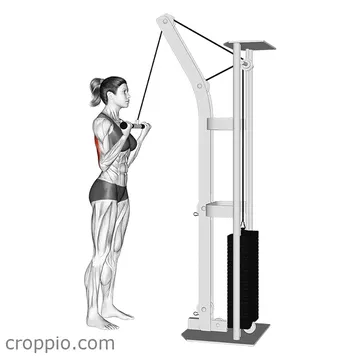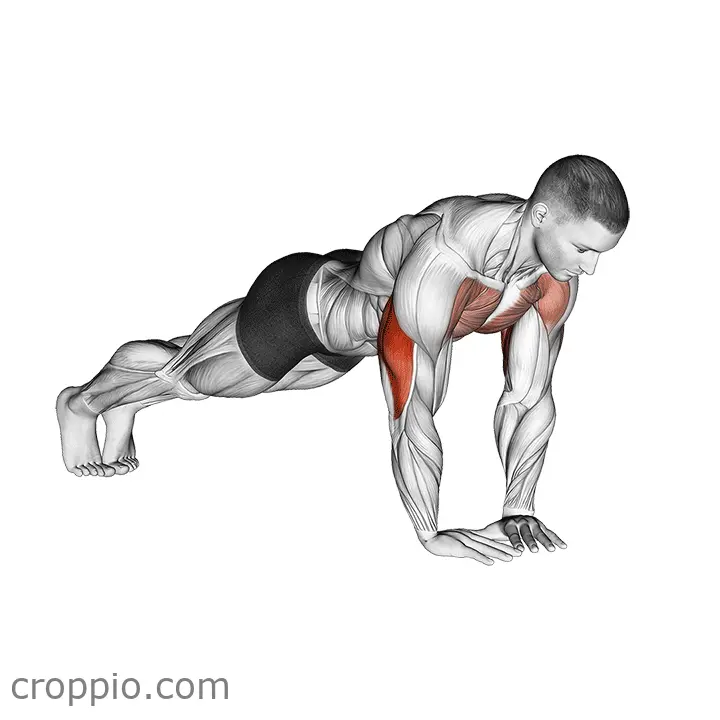Straight Bar Pushdown

Muscles Involved
The straight bar pushdown primarily targets the triceps brachii, the large muscle at the back of the upper arm. This exercise emphasizes the long head and lateral head of the triceps, contributing to muscle growth and strength in this area. Additionally, the secondary muscles involved include the anconeus, which assists in elbow extension, and the muscles of the shoulder, such as the deltoids, which help stabilize the movement. By engaging these muscles, the straight bar pushdown is an effective way to develop upper arm strength and definition.
Top Mistakes
- Using too much weight, leading to poor form and potential injury.
- Locking out the elbows at the bottom, which can place excess strain on the joints.
- Failing to maintain a straight posture, resulting in unnecessary back strain.
- Not controlling the weight on the ascent, which diminishes muscle engagement.
Execution Tips
- Stand upright with your feet shoulder-width apart and engage your core for stability.
- Grip the straight bar with both hands, keeping your palms facing down and spacing them at shoulder width.
- Start with your elbows close to your body, positioning them at a 90-degree angle.
- Slowly push the bar down until your arms are fully extended, ensuring that you do not lock your elbows.
- Control the bar as you return to the starting position, maintaining tension in the triceps throughout the movement.
Workouts
The straight bar pushdown can be incorporated into your upper body workout routine effectively. For optimal results, aim for 3 to 4 sets of 10 to 15 repetitions, allowing adequate rest (60-90 seconds) between sets. To complement this exercise, consider pairing it with other triceps-focused movements such as skull crushers or triceps dips, as well as compound lifts like bench presses to engage multiple muscle groups and build overall strength.
Conclusion
The straight bar pushdown is a highly effective exercise for targeting the triceps, enhancing strength, and improving muscle tone in the upper arm. By focusing on proper form and avoiding common mistakes, individuals can maximize the benefits of this exercise. Incorporating this movement into a well-rounded training program not only boosts upper body performance but also contributes to aesthetic goals, making it a valuable addition to any fitness routine.



